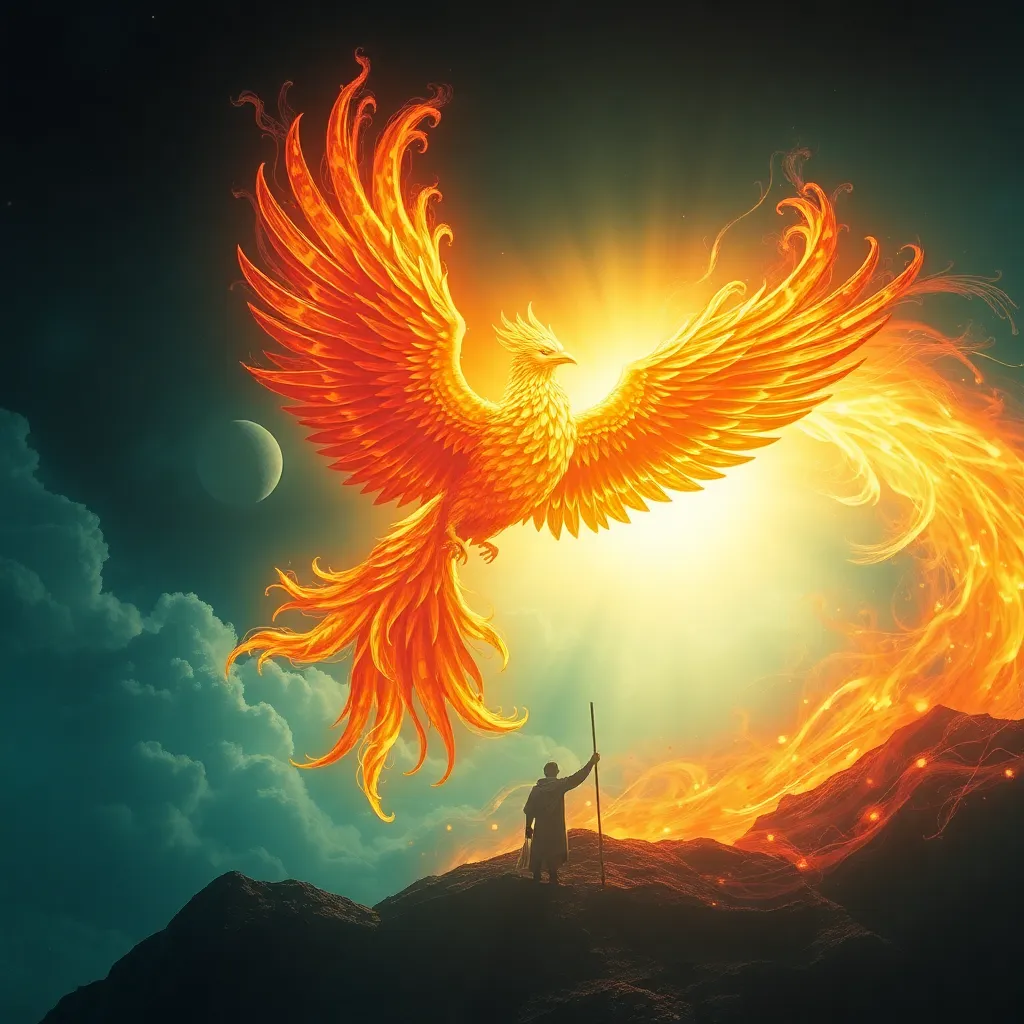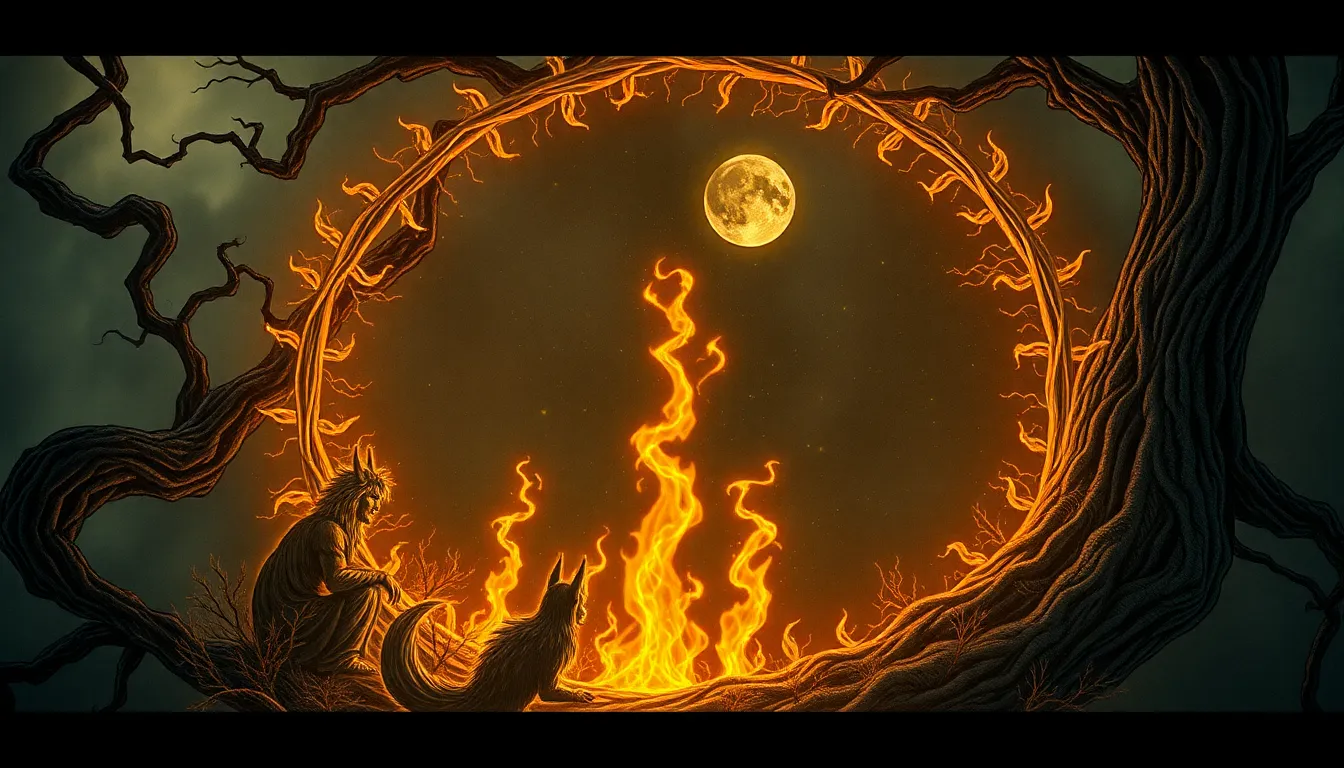The Ho-o Bird: A Firebird’s Journey from the Sun to the Earth
I. Introduction to the Ho-o Bird
The Ho-o Bird, often referred to as the Chinese phoenix or the Japanese “Hou-ō,” holds a prominent place in East Asian mythology. Revered for its beauty and symbolism, the Ho-o Bird embodies various virtues and ideals in different cultures. This mythical creature is not merely a fancy of the imagination; it carries deep significance, representing concepts such as immortality, renewal, and harmony.
Characterized by its vibrant colors and graceful form, the Ho-o Bird is often depicted with a long tail and a majestic crest. Its presence in mythology serves to inspire and convey messages of hope and fortune, making it a symbol of great importance across generations.
II. Origins of the Ho-o Bird in East Asian Culture
The origins of the Ho-o Bird can be traced back to ancient East Asian cultures, particularly within Chinese and Japanese mythologies. It is believed that the concept of the Ho-o was influenced heavily by the early stories of the phoenix, a fiery bird that rises from its ashes, symbolizing rebirth and immortality.
In Chinese mythology, the Ho-o is often associated with the empress and represents the ideal feminine qualities of grace and virtue. In contrast, Japanese mythology depicts the Ho-o Bird as a symbol of peace and prosperity, often linked to the imperial family and seen as a guardian of the nation.
III. The Ho-o Bird’s Symbolism
The symbolism of the Ho-o Bird is multifaceted, encompassing various themes that resonate across different cultures. Some of the key representations include:
- Prosperity: The Ho-o Bird is often seen as a harbinger of good wealth and fortune, believed to bring prosperity to those who encounter it.
- Purity: With its exquisite plumage and serene demeanor, the Ho-o symbolizes purity and the beauty of the natural world.
- Peace: The bird is also a symbol of peace, often associated with tranquility and harmony within society.
In various tales, the Ho-o Bird serves as an auspicious sign, marking significant life events such as births, marriages, and other celebrations.
IV. The Journey from the Sun to the Earth
One of the most captivating aspects of the Ho-o Bird is its mythological narrative of flight. Legend has it that the Ho-o originates from the sun, soaring high above the clouds, embodying celestial beauty and divine power. Its journey to the Earth is filled with meaning and purpose.
This journey is not just a physical descent; it symbolizes the connection between the heavens and the earth, where the bird brings with it blessings and enlightenment. In cultural storytelling, the flight of the Ho-o Bird represents the aspiration to achieve higher ideals, bridging the gap between the divine and the mortal realms.
V. Artistic Representations of the Ho-o Bird
The Ho-o Bird has inspired countless artistic representations throughout history. In traditional art forms, it is often depicted in:
- Paintings: Artists portray the Ho-o in vibrant colors, capturing its ethereal beauty and elegance.
- Literature: The bird features prominently in folk tales, poems, and myths, where its story is woven into the cultural fabric of society.
- Textiles: The Ho-o design is commonly found in traditional fabrics and garments, symbolizing good fortune and auspiciousness.
In modern times, the influence of the Ho-o Bird extends to contemporary artistic interpretations, where it appears in various forms of media, including graphic design, film, and fashion, continuing to captivate audiences with its allure.
VI. The Ho-o Bird in Contemporary Culture
Today, the Ho-o Bird remains a significant figure in contemporary culture, appearing in various forms of pop culture, media, and fashion. Its elegant and vibrant image is often used in:
- Fashion: Designers incorporate the Ho-o motif into clothing and accessories, symbolizing luxury and beauty.
- Film and Animation: The Ho-o appears in movies and animated series, often representing themes of rebirth and transformation.
- Spirituality: In modern spiritual practices, the Ho-o Bird is embraced as a symbol of enlightenment and a connection to the divine.
As a symbol of hope and renewal, the Ho-o Bird continues to inspire individuals seeking meaning and purpose in their lives.
VII. Conservation and Preservation of Cultural Heritage
Maintaining the story of the Ho-o Bird is crucial for preserving cultural heritage. As globalization spreads, traditional myths and stories risk being forgotten. Efforts to conserve these narratives include:
- Educational Programs: Initiatives are being developed to teach younger generations about the significance of the Ho-o Bird and other mythological creatures.
- Cultural Festivals: Celebrations that honor the Ho-o Bird help keep its story alive, fostering community and cultural pride.
- Artistic Collaborations: Artists and storytellers are collaborating to create new interpretations that resonate with contemporary audiences, ensuring the Ho-o Bird’s legacy continues.
VIII. Conclusion
The enduring legacy of the Ho-o Bird serves as a testament to its significance in East Asian mythology. As a symbol of prosperity, purity, and peace, the Ho-o Bird not only enriches cultural identity but also connects generations through timeless stories and ideals. The importance of mythological creatures like the Ho-o Bird lies in their ability to convey universal truths and values, reminding us of our shared humanity and the beauty of our diverse cultural heritage.



